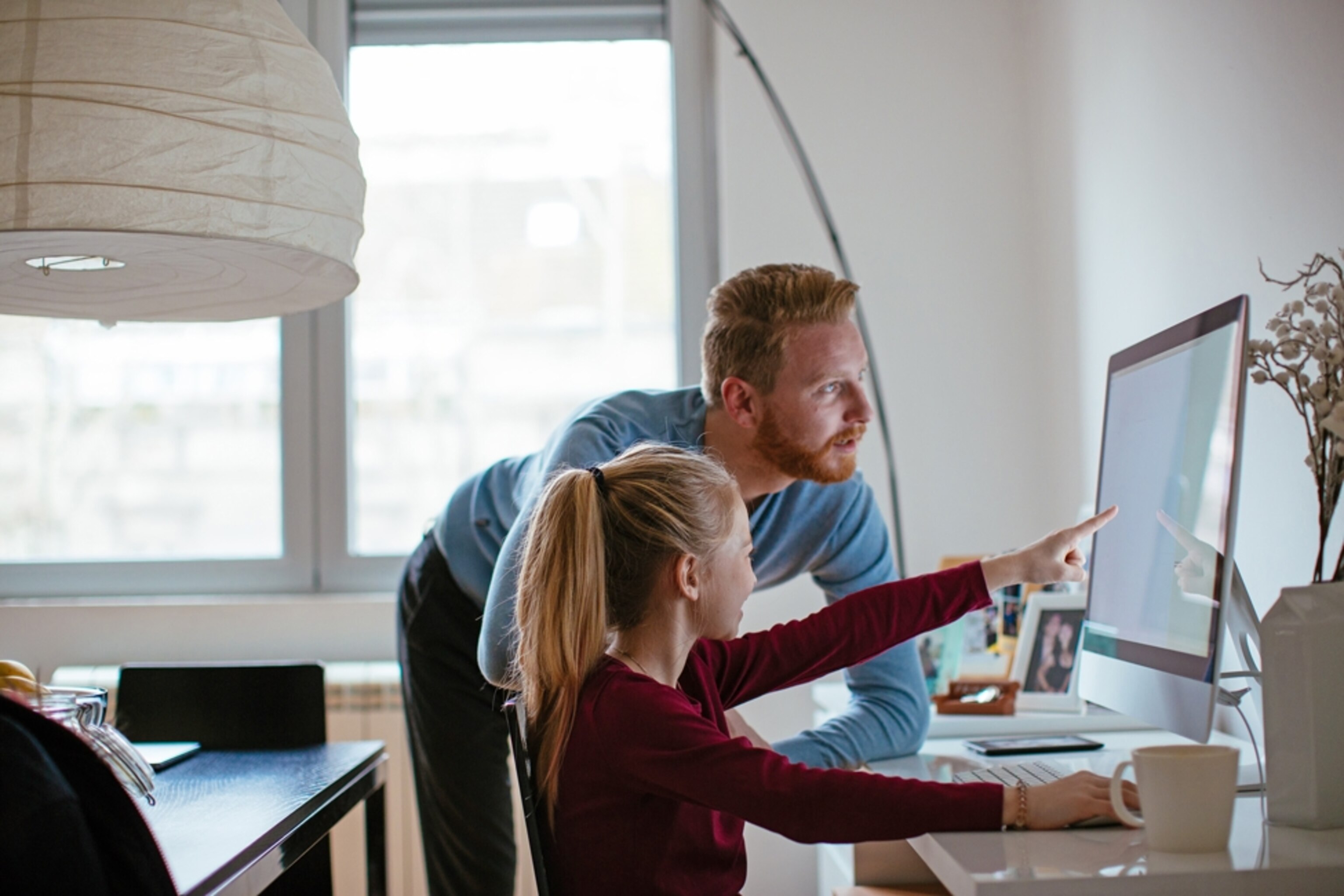
Kids are becoming the teachers during the pandemic.
Parents can learn a lot from their children—if they know what they look for.
When 11-year-old Maggie Solomon was challenged to develop an idea for her Denver school’s annual Innovation Lab project, she knew she already had a million-dollar winner. After repeatedly washing her hands while counting down the recommended 20 seconds, she decided her gadget would be a combo soap dispenser and timer.
Wary of competition, Maggie won’t disclose details just yet. (Plus she hasn’t figured out, like, how it’ll work.) But inspired to solve other problems herself, she’s steadily cranking out products from her kitchen-table workshop, like dollhouse furniture from recycled packaging and craft supplies. “Stores don’t have everything all the time anyway,” she says. “I can just make what I need.”
It was a learning opportunity for Maggie—and for her mom as well. “Her instinct was to try to solve problems instead of worrying about problems,” Sarah Solomon says. “It was a lesson [for me] about resilience and adaptability.”
Parents have learned a lot during their stay-at-home time with their families, from how to juggle well, everything from home to figuring out the best laptop angle for a video conference call. But what’s surprising many parents is how much they’re learning from their children.
Even in the best of times, parents might be skeptical that their kiddos have something to teach them. And it’s not like they’re going to suddenly look up from their devices and spout words of wisdom. The key is to have an open mind and be willing to search for the meaning in everyday actions.
“It’s hard to learn from an experience when you’re doing it,” says child psychologist and educational consultant Melinda Macht-Greenberg. “But if you can step back and reflect on what’s happened, you can ask yourself, ‘What did I learn from this?’ Then things start to stick.”
Appreciation in odd places
Spending time 24/7 with children has provided parents with plenty of opportunities to bond. So it’s no wonder quarantine orders have helped parents learn to see their children in surprising new ways.
For instance, after Laurel Kellam struggled to homeschool youngest daughter Juliet on New Math, she needed some mentoring from the only expert in the house—sixth-grader Eliza. “I sometimes still think of them as toddlers,” admits the San Francisco Bay-area mom. “I’ve learned how much more capable they actually are.”
Being able to see kids from a new perspective can be inspiring. Like a lot of families, the Kellams are cooking together more. After some success with homemade donuts, she and her girls have started a sort of collaborative test kitchen—in which the girls are the chefs proposing experimental ingredients. And though the end result is a tasty new recipe (or not), Kellam has also learned about creativity and trying new things. “I like seeing them being more creative and spontaneous,” Kellam says. “And it makes me want to jump in every now and then with some spontaneity too.”
Rebecca Medina Cole was also inspired to try something new after watching her 13-year-old son and 15-year-old daughter attend virtual classes. The fourth-grade teacher from Jenks, Oklahoma, at first resisted running a virtual classroom (which wasn’t required for elementary students in her school district). “I’m stubborn and I don’t like change,” she says. “For me, it meant losing control.”
But after seeing how easily her kids adapted to their new way of learning—and how happy it made isolated, anxious students—she needed to try. “Watching my own children do it made me realize I could do it too,” Cole says, adding that her children cheered her on at home. “My family gave me the confidence to step out of my comfort zone.”
Her on-the-fly online classroom went so well that the school district asked her to share some of her remote lessons with other teachers. “I don’t know what challenge will come next,” Cole says. “But whatever it is, now I feel like we can handle it as a family.”
For Kellam, being hands-on with her girls’ online instructions taught her to appreciate teachers like Cole. After realizing that her daughters had surprisingly different learning styles—one is bold and confident, while the other is meticulous and easily frustrated—she now feels she’ll be better equipped to communicate with teachers and pitch in. “It’s made me appreciate what teachers do so much more,” she says. “How does a teacher with 30 kids—and all their different learning styles—possibly teach everyone?”
Emotional lessons
As parents provide children more emotional support than ever in this disrupted new world, they’re also learning how their children’s emotions can help them understand their own. For example, after her two young sons began reacting to everyday problems with more tears and frustration than usual, Kathryn Amatrudo realized they were far more stressed than she had thought. And that made her realize something about her own emotional state. “Seeing them so stressed made me reflect,” says the Laurel, Maryland, mom. “I recognized that I was more stressed than I realized, and as a result I was less patient with them in these difficult moments.”
She learned that even though she couldn’t fix the pandemic—the underlying cause of her boys’ frustrations—simply acknowledging that she felt the same way made them feel better. “Hearing me say out loud, ‘This is weird and hard for me too’ has helped so much,” Amatrudo says. “I’ve been increasing that kind of talk, not just at bedtime or after a meltdown, but any time they seem blue.”
Learning to share with her boys how the pandemic was making her feel has helped heal frayed nerves—theirs and hers. “It’s helped me keep my patience,” Amatrudo says. “By helping them work through their emotions, it helps me with mine too.”
And despite the bouts of cabin fever tension, she’s sure the extended stay-at-home has brought the family closer together. “We’ve really figured out that we’re all in the same boat.”
